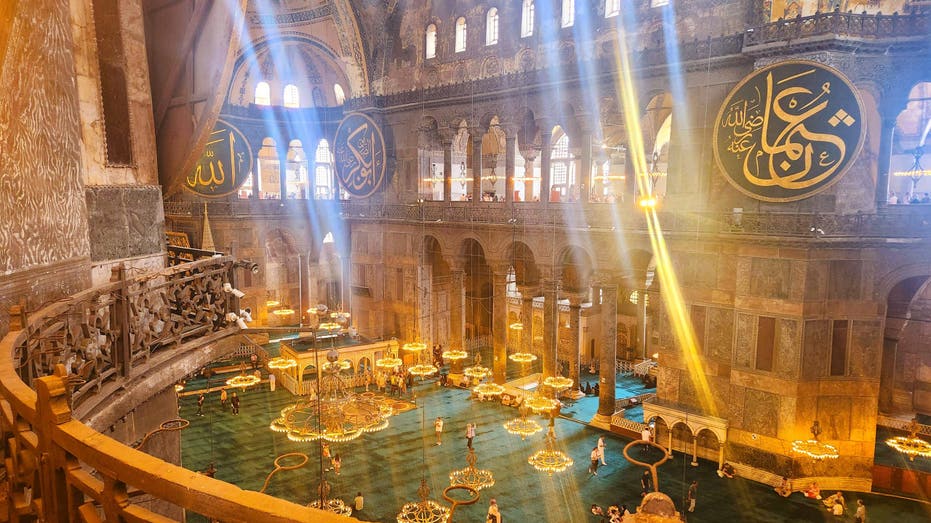Hagia Sophia: Istanbul’s Timeless Marvel Still Pulls Massive Crowds

Sarah Johnson
April 18, 2025
Brief
Hagia Sophia is Istanbul’s iconic landmark, reflecting 1,500 years of history as a Byzantine basilica, Ottoman mosque, and modern tourist attraction, renowned for its architecture and cultural legacy.
Hagia Sophia stands out as the must-see landmark for visitors to Istanbul, Turkey, despite the city's skyline being crowded with domed mosques and soaring minarets. Tourists might confuse it from afar with its lookalike neighbors, like the Süleymaniye Mosque or the Blue Mosque, but up close, Hagia Sophia's unique presence is unmistakable.
The building's story reads like a whirlwind tour of world history. Commissioned by Emperor Justinian I and brought to life by Greek architects Isidore of Miletus and Anthemius of Tralles, Hagia Sophia was constructed between 532 and 537 AD. For almost a millennium, it reigned as the largest and most ornate Christian basilica in the Byzantine Empire, only to transform into a mosque after the Ottoman conquest in 1453.
Robert Nelson, an emeritus professor at Yale, called it "simply unique, without parallel." He points to its vast marble columns, imported from across the ancient world, and its dome, a feat of engineering that wasn't outdone until St. Peter's Basilica centuries later. You have to wonder how anyone in the sixth century managed to put that together without a blueprint app.
Hagia Sophia is often dubbed the "eighth wonder of the world," a title it wears well considering its blend of lavish design, staggering size, and 1,500-year-old legacy. Even Emperor Justinian was said to have declared, "Solomon, I have vanquished thee!" when the basilica was completed—clearly not one to hide his pride.
The landmark sits at the crossroads of continents and faiths. Constantinople, now Istanbul, was once Christianity's eastern capital, and the Hagia Sophia reflected that status. After the 1054 Great Schism split the Christian church, the city's fortunes shifted, and history took some violent turns—including the infamous Massacre of the Latins in 1182 and the city's sack by crusaders in 1204.
The Ottomans seized Constantinople in 1453, turning Hagia Sophia into a mosque and sparking a wave of similar domed architecture across Istanbul. Sultan Mehmed II ordered the basilica preserved, and Ottoman architects tried to capture its grandeur in their own works—imitation really is the sincerest form of flattery, especially on this scale.
Through centuries of power struggles, sieges, and cultural shifts, Hagia Sophia stayed at the heart of Istanbul. As western Europe expanded into the New World, the Ottomans pressed into Europe, laying siege to Vienna until King Jan III Sobieski and his winged hussars famously turned the tide in 1683. The city on the Bosporus, though, remained firmly in Turkish hands.
The 19th century brought a wave of Romantic fascination with the past, drawing renewed international interest to the Hagia Sophia. By 1930, Constantinople was renamed Istanbul, and in 1935, founder of modern Turkey Mustafa Kemal Atatürk converted the Hagia Sophia into a museum—a move that opened its doors to the world and cemented its tourist appeal.
That status lasted until 2020, when the Turkish government returned Hagia Sophia to mosque status, causing quite a stir internationally. Now, tourists are limited to the upper gallery, where they can still marvel at ancient mosaics of Jesus, Mary, and the saints—images that have survived centuries of religious and political upheaval.
Despite the restrictions, the lines outside are as long as ever, with around 50,000 visitors daily. Women must cover their heads to enter, and Turkish citizens have a separate entrance leading to the mosque's ground floor.
Even surrounded by Istanbul's lively bazaars and dizzying array of domes, Hagia Sophia remains the city's centerpiece—a 1,500-year-old testament to ambition, faith, and the enduring power of awe. I'd bet the architects never imagined their work would still be stopping tourists in their tracks (or clogging up the selfie lines) in the 21st century.
Topics
Editor's Comments
Hagia Sophia has changed religions more times than some people change their hairstyle, yet it's still the crown jewel of Istanbul. It's wild to think a building this old has survived wars, crusades, and even modern tourism—testament to the idea that great architecture really does outlast the headlines.
Like this article? Share it with your friends!
If you find this article interesting, feel free to share it with your friends!
Thank you for your support! Sharing is the greatest encouragement for us.



